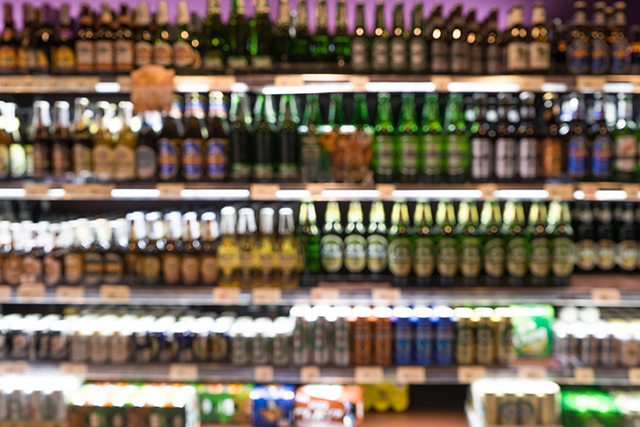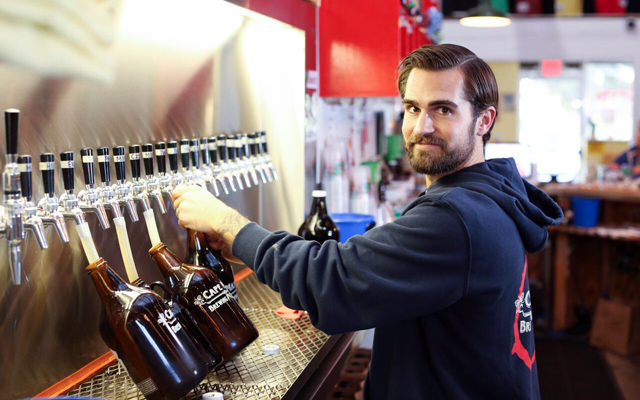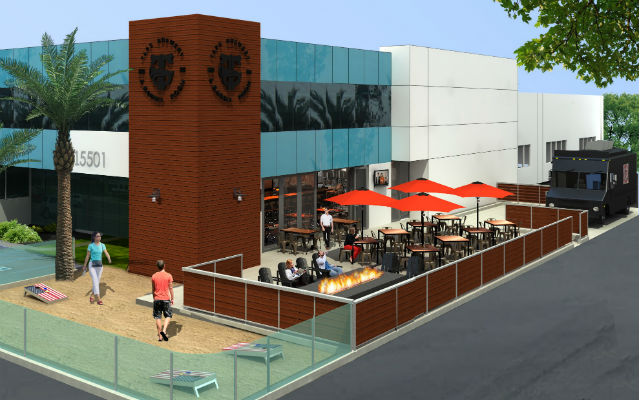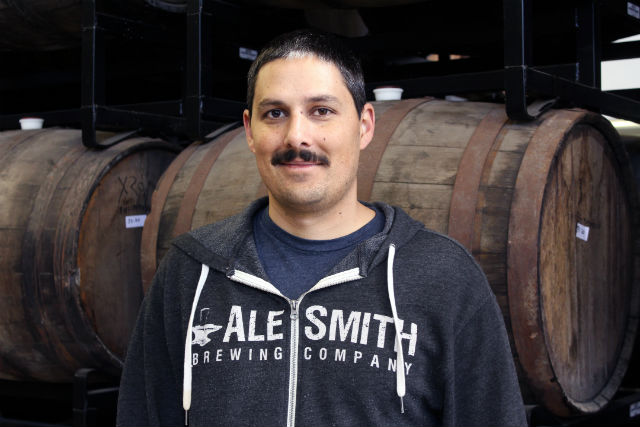
Eschewing traditional methods of advertising for the most part, craft beer has thrived in still getting its message out to potential customers.
Between social media — especially Facebook, Twitter and Instagram — and apps such as Untappd, breweries have not had to shell out big bucks to local or national TV, radio or newspaper outlets to get their brand name out there.
Not that TV commercials haven’t been made. Boston Beer Company, the maker of Samuel Adams is a mainstay on national TV with commercials. New Belgium first debuted a regional spot that played in some major markets in 2005 and again in 2013 and 2014 with its “Pairs Well With People” campaign.
Yet for the most part, the largest breweries still shy away from what can be seen as a money drain for promoting a product that is still only being bought by less than 20 percent of the nation’s beer drinkers. It’s also perceived by some marketers as a class war. “I think a lot of craft brewers see themselves as iconoclast and it’s easy for them to dismiss what the big mega brands use and go somewhere else,” said Marty Stock, the CEO of Chicago-based ad agency Cavalry. “I think that can be unfair. It’s an attitude that may unite [craft brewers]. They have passion for craft beer and I think that can feed into that attitude that we have to do everything different and maybe a rush to judgement of the marketing vehicles available to them.”
With social media available now, where breweries can have instantaneous conversations with buyers, buying an ad for TV, radio or newspaper can seem a step back according to Barkley Media’s Director of Business Strategy Chad Nicholson. “Traditional broadcast advertising makes this two-way conversation more difficult, it’s much easier to accomplish through targeted social media leveraging relevant content, earned media, and experiential marketing such as food and art events, brewery tours and tastings,” he said. “We like to call this approach to advertising ‘story living,’ where traditional marketing is more similar to ‘storytelling.’”
Not to say that traditional methods aren’t used. For Deschutes, it has used local print and billboard advertising for its annual Street Pub takeovers where it makes an outdoor pub to select cities throughout the year while raising money for local nonprofits. Locally to the breweries Pacific Northwest area, it has also advertised specific beers in regional publications like Portland Monthly and Seattle Met according to Digital Marketing Manager Jason Randles.
At Stone Brewing, Nickie Pena of the brewery’s public relations team said “it’s part of our company culture to not advertise or pay for sponsorship … like not even a Facebook promoted post. … This is something our two co-founders have upheld since day one.”
For Mark Rieth in Detroit, being in local pro sports team’s arenas is helpful for getting his Atwater Brewery recognized. “As the brewery of Detroit this is a major focus of our branding,” he said, adding that most of Atwater’s advertising budget is focused on local media sources like the Michigan Beer Guide.
Houston’s St. Arnold social media coordinator Jeremy Johnson said it has found Facebook hard to get people to even see its posts without paying, but targeting certain posts has worked. A pub crawl in Austin that Saint Arnold had done in the past usually got 200-300 people out. By spending $200 and targeting the Austin area and a certain age demographic, the results were 600 customers attending the event. “Throwing money behind something on Facebook and seeing the end result was good to see,” Johnson said. “It’s good to see likes and clicks and shares, but until you actually see people show up at what you are trying to promote, it was a good example of it working right.”
Social media, performed right can be a money saver and help expand a brewery’s brand said Nicholson. “Use Twitter for education, Instagram to inspire, and Facebook or Tumblr as a content hub,” he said as an example of multi-use on many platforms. “To maximize effectiveness it’s important to identify what we call the “unobvious influencers.” These are individuals who we identify as an influencer based on how their network reacts to what they share, and who else they are connected to in other networks rather than number of followers, and whether or not the person is famous or well known.
“Once they are identified we can listen to their conversations, identify key insights, generate content based on those insights and push it back out to those influencers. Since the content was created based on the user’s conversations, the engagement, and share worthiness of the content is exasperated. This allows for more meaningful engagement and reach with fewer dollars.”
Nicholson did warn that it’s better to go deeper on the right platform than spread dollars and time too thin so that breweries are present across all channels. “It can actually work against your brand if you are unable to consistently serve up new content on your platforms because you are stretched too thin,” he explained.
Stock added that messages on Twitter or Instagram can be wasted “because there isn’t discipline and thinking. It’s cheap so people throw tons of stuff out there. It’s very difficult to monetize. What is a like worth? What is a retweet worth? It’s nearly impossible to figure out.”
Bill Helgeson of Minnesota’s Risdall Marketing Group believes that national branding isn’t very important yet in craft beer. Local and regional can be quite successful without the trap of complete reach. “To me, it’s still something that needs to be a quality product,” he said, “The area of your distribution, I don’t care about.”
Personally a fan of his local beers such as Summit and Surly, Helgeson said word of mouth is just as important as social media for a brewery. “People like to experiment and try new beers,” he said. “You can pick up some great 22 ounce bottles and bring them to a party and hand out little 4 ounce samples.”
That’s what can generate just as much buzz as a 30 second TV spot that might rely on humor or be fact laden.
Nicholson said success for startups can come outside marketing. It starts with being on tap, creating a loyal following that can spread the word for you and develop a strong “why” for your product. “It must be more than for the love of beer,” he said. “Create a story that inspires.”
Once that is established, breweries can get serious about brewing and work toward separating from the pack by being consistent and winning awards. “Build a focused product architecture that has a strategy,” continued Nicholson. “You are now moving from celebrating small wins to building out distribution and need a stronger selling strategy.”
From there, owning a market and then a region happens when a brewery is seen everywhere.
“Accessibility, from a literal and emotional standpoint is key,” said Nicholson. “Your fans need to be able to literally find you on tap or on shelf. At the same time you need to make your brand approachable, so that loyal craft beer drinkers accept you, and new craft beer buyers aren’t intimidated.”






2 Trackbacks / Pingbacks